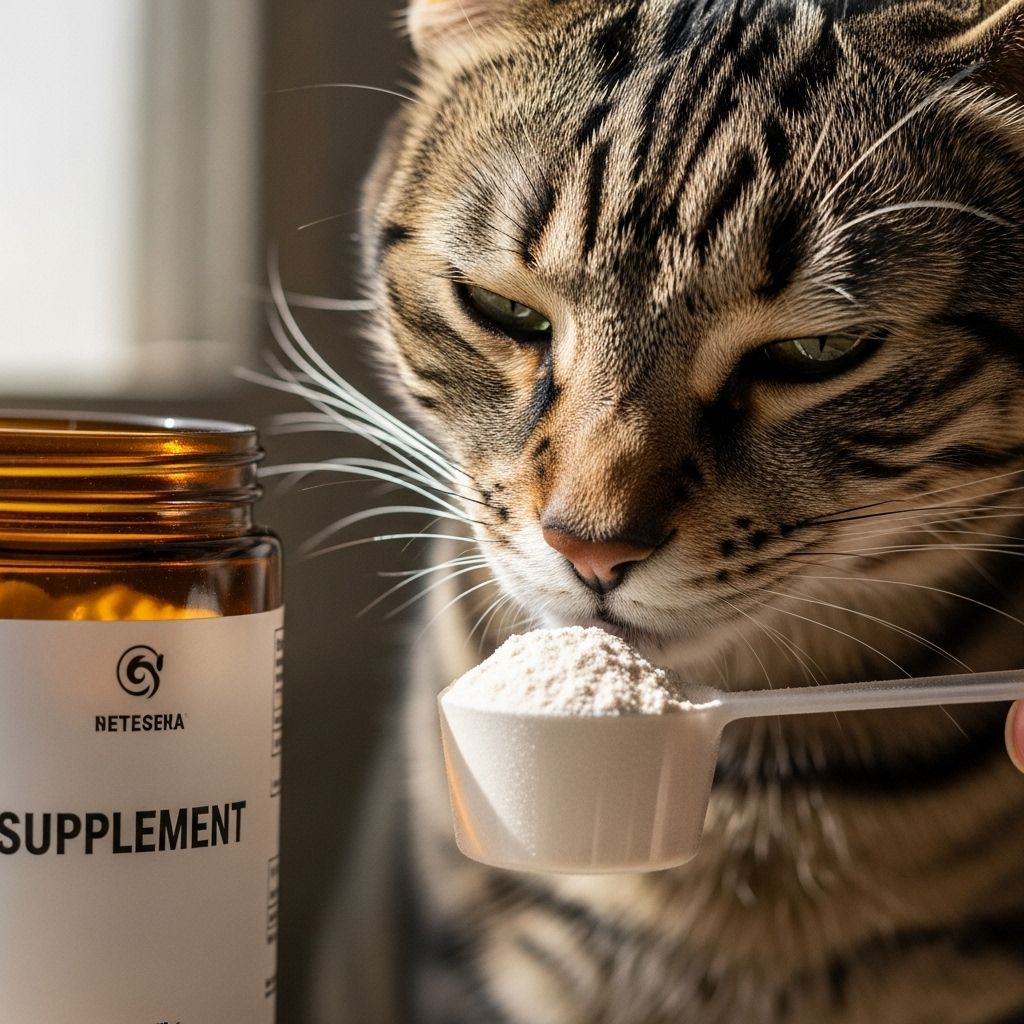Fera Pet Organics Probiotics for Cats: Tested & Reviewed

Welcome — if you’re searching for reliable information on fera pet organics probiotics review cats, this article walks you through what to look for, how probiotic supplements for cats work, and how to decide whether a Fera Pet Organics probiotic product might be right for your cat. The goal is to give practical, evidence‑based guidance without alarmism and with clear safety notes.
What is Fera Pet Organics (short overview)
Fera Pet Organics is a brand that sells pet supplements that often emphasize natural ingredients. Like many pet supplement brands, they offer products marketed to support digestive health, skin, and general well‑being. This review focuses on probiotics intended for cats and explains how to evaluate a product from this brand or any other.
How probiotics for cats work
Probiotics are live microorganisms that, when given in adequate amounts, can support gut microbial balance. In cats, probiotics may help with occasional digestive upsets, stool consistency, or post‑antibiotic recovery. The effect depends on the specific strains used, the colony forming units (CFUs), product quality, and the individual cat’s needs.
Common strains and what to expect
- Bacillus species (e.g., Bacillus subtilis): spore‑forming, stable in shelf products.
- Lactobacillus and Bifidobacterium spp.: commonly used for gut health in many species.
- Enterococcus faecium: sometimes included in pet formulas for digestive support.
Note: Different strains have different effects. No single strain works for every problem, and scientific support varies by strain and condition.
What we looked at in this Fera Pet Organics probiotics review for cats
Rather than claiming clinical trials, we evaluated typical factors consumers should consider when reviewing any probiotic product for cats:
- Ingredient transparency — are strains and CFU counts listed?
- Dosage instructions and whether they’re specific to cat size/weight.
- Storage instructions (refrigerated vs. shelf‑stable) and packaging that protects viability.
- Third‑party testing or quality assurances on the label.
- Customer experiences and reported side effects (general patterns, not individual claims).
- Safety considerations for kittens, seniors, and immunocompromised pets.
Label reading: what to check before buying
- Exact strains listed (not just “proprietary blend”) — strain specificity matters.
- CFU at time of manufacture and ideally guaranteed through expiration.
- Serving size and number of servings per container — this affects cost per dose.
- Any added prebiotics (e.g., FOS) or fillers — know what you’re feeding.
- Storage requirements (some need refrigeration or include desiccants/oxygen barriers).
Pros and Cons
| Pros | Cons |
|---|---|
| May support occasional digestive upsets and stool consistency | Effectiveness depends on specific strains and individual cat — not guaranteed |
| Often shelf‑stable (depends on formula) and easy to administer | Label may not always list third‑party verification; check packaging |
| Convenient daily dosing formats (powders, chews, capsules) | Possible mild GI side effects at start (gas, soft stool) or rarely allergic reactions |
How to use a probiotic for cats safely
Follow these steps to introduce any probiotic, including Fera Pet Organics products:
- Check the product label for the recommended dose by weight or “per cat.”
- Start with the lower end of the dosing range for 3–5 days to monitor tolerance, then increase if recommended.
- Mix powders into a small amount of wet food or use a treat form to ensure ingestion.
- If your cat is on antibiotics, ask your veterinarian about timing—some vets recommend giving probiotics a few hours after antibiotics or waiting until the antibiotic course is finished.
- Store the product as directed to preserve live cultures (keep sealed, refrigerate if required).
Safety, side effects, and precautions
Most healthy cats tolerate probiotics well. Common, mild side effects during the first few days can include soft stools, mild gas, or a temporary change in appetite. Stop use and contact your veterinarian if you notice severe vomiting, diarrhea, lethargy, or signs of an allergic reaction (facial swelling, hives, trouble breathing).
Special caution:
- Kittens under a certain age and immunocompromised cats may require veterinary approval before probiotic use.
- Probiotics are supplements, not medications — they do not replace treatment for infections, parasites, or chronic GI disease.
When to contact your veterinarian
Contact your vet if your cat has:
- Persistent vomiting or diarrhea lasting more than 24–48 hours
- Underlying health conditions (e.g., diabetes, kidney disease, immune disorders)
- Recently had surgery or is on immunosuppressive medications
Final verdict — is Fera Pet Organics probiotic right for your cat?
In a general sense, a probiotic from a reputable brand can be a useful tool for occasional digestive support in cats. For a trustworthy decision regarding fera pet organics probiotics review cats, verify the product label for specific strains, CFU counts, storage requirements, and any quality seals. If the formula lists clinically recognized strains with adequate CFUs and clear dosing, it can be considered as an option — but individual response varies.
Always discuss starting any new supplement with your veterinarian, particularly if your cat has health issues or receives other medications.
Frequently Asked Questions (FAQ)
1. Will probiotics cure my cat’s digestive problems?
No. Probiotics can help support gut microbial balance and may improve mild, occasional digestive upsets, but they are not a cure for infections, parasites, food allergies, or chronic medical conditions. Diagnosis and treatment by your veterinarian are essential for persistent problems.
2. How long before I see results?
Some owners notice changes in stool consistency or appetite within a few days, but it can take 2–4 weeks to evaluate full benefit. If there’s no improvement after a month, consult your vet.
3. Can I give human probiotics to my cat?
Human probiotics are formulated for people and may contain strains or dosages not ideal for cats. It’s safer to use a product labeled for cats or recommended by your veterinarian.
4. Are probiotic chews safe for picky eaters?
Many cats accept probiotic chews, but if your cat refuses treats, powders that mix into food or a capsule opened into wet food may work better. Always ensure the full dose is consumed.
Key Takeaways
- Check labels for specific strains, CFU count, and guaranteed viability through expiration.
- Start slowly and monitor your cat for mild, short‑term side effects.
- Probiotics can help with occasional GI issues but are not a replacement for veterinary care.
- Discuss probiotic use with your veterinarian, especially for kittens, seniors, or immunocompromised cats.
- Storage and product quality matter — follow directions on the package to preserve live cultures.
Note: This review is informational and summarizes considerations for evaluating Fera Pet Organics probiotic products for cats. It is not a substitute for personalized veterinary advice.
Disclaimer: The information provided here is for educational purposes only. It does not replace veterinary diagnosis or treatment. Always consult your veterinarian before starting any new supplement, especially if your cat has an existing medical condition or is taking medication.

Leave a Reply